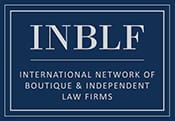BPA: Is it a complex story? Oh, baby.
September, 2013
Eric F. Greenberg | Attorney-at-Law
The drama over bisphenol A has already been so complex and weird, we should have expected the latest odd chapters.
In July, FDA made final a new regulation prohibiting some uses of BPA, and for the second time, it did so not because BPA is unsafe, but because the use had been “abandoned.” In fact, FDA continues to reassure consumers that current uses are safe.
But, importantly, FDA is not sending mixed messages. No, the rare abandonment ruling was originally driven by a food additive petition from a member of Congress, Rep, Edward J. Markey, D-MA. What was repealed was clearance for the use of BPA-based epoxy resins in coatings for packaging of infant formula, whether powdered or liquid. Last year, FDA similarly withdrew clearance of polycarbonate, containing BPA, for baby bottles and sippy cups (including their closures and lids).
Remember that food additives, including food contact substances like the materials used to make packaging, have to have FDA clearance to be used, and such clearances almost always come with specific limitations for uses with specified food types or conditions of use. So, this new regulation took away some of the specific uses permitted for BPA. From now on, use of BPA in coatings for packaging of infant formula makes those containers adulterated under the law, and therefore unlawful. The other cleared uses of BPA were not changed.
Turns out, the process set out in the regulations for making changes to food additive clearances, for example when new information comes up about the toxicity of a chemical, also says FDA can make changes if “old uses” are “abandoned.” Such a revocation, said FDA in announcing the final regulation, “is not based on safety, but is based on the fact that regulatory authorization is no longer necessary for the use of the food additive because that use has been permanently and completely abandoned” in the U.S. market.
Here, Rep. Markey had done his homework, and presented FDA with survey data from “all of the U.S. registered manufacturers of infant formula” (there are four of them) showing manufacturers abandoned the use and that such packaging wasn’t being introduced into the U.S. market.
When, about a year ago, FDA also withdrew clearance of polycarbonate as a packaging material for making baby bottles and sippy cups (including their closures and lids), again, the reason was abandonment. The petition for that repeal had been submitted by the trade group American Chemistry Council, which describes itself as “America’s oldest trade association of its kind, representing companies engaged in the business of chemistry.” ACC had presented FDA with thorough information from an industry survey that showed resin manufacturers “are no longer, to their knowledge, selling [polycarbonate] resins to be used in the manufacture of baby bottles and sippy cups” intended for sale in or import into the U.S. market.
When FDA announced in July the repeal of the clearance for infant formula packaging, ACC issued a statement noting, correctly, that FDA’s action was “based solely on marketplace conditions,” namely, the fact that “BPA is no longer used in infant formula packaging,” and was not based on any concern with the safety of BPA.
As noted, FDA continues to say it is studying BPA’s safety, and in the meantime is reaffirming that it thinks it’s safe as currently used. Here’s what FDA says on its web site, in a Question and Answer document: “Q: Is BPA safe? A: Yes. Based on FDA’s ongoing safety review of scientific evidence, the available information continues to support the safety of BPA for the currently approved uses in food containers and packaging. People are exposed to low levels of BPA because, like many packaging components, very small amounts of BPA may migrate from the food packaging into foods and beverages.”
FDA’s most recent formal announcement about its safety review of BPA, in 2010, expressed “some concern” about some health effects of BPA on “fetuses, infants, and children” but acknowledged there were important uncertainties about the data they had looked at. Last year, FDA denied a petition from the Natural Resources Defense Council to ban all uses of BPA in packaging and food, saying the petition didn’t present sufficient information to persuade FDA to do so. NRDC had filed the petition in 2008, then when FDA took too long to respond, NRDC sued in 2011 to get a court order to force FDA to make a decision on the petition. As predicted might happen here in October 2011, FDA responded with a No.
FDA’s ongoing examination of BPA comes alongside work by other governments, including the European agency, EFSA, and even some U.S. states (Maine’s legislature passed a law to require packaging users to report uses of BPA, but then the governor vetoed it), Health Canada (they say they are still looking at it, recommend uses be limited for packaging to which infants and newborns are exposed to as low as reasonably achievable, but meanwhile they have “concluded that the current dietary exposure to BPA through food packaging uses is not expected to pose a health risk to the general population, including newborns and infants.”). And France, Belgium, and Sweden have banned BPA from food products for infants and young children.
What’s next? Well, next year FDA and Europe’s EFSA are both expected to update their assessments of current exposures, and now the infant formula, baby bottle and sippy cups uses are not part of the equation. Remember, safety is judged according to levels of exposure in the diet, and frequent uses by small people involved the highest levels of potential exposure. So, FDA might well come out with an even stronger confirmation of BPA’s safety. PW
Eric Greenberg can be reached at [email protected], and visit his firm’s Web site at www.ericfgreenbergpc.com.
This article is informational only and is not intended as, and should not be considered to be, legal advice.
Be sure to check for any updated information about the topics discussed in this article.


